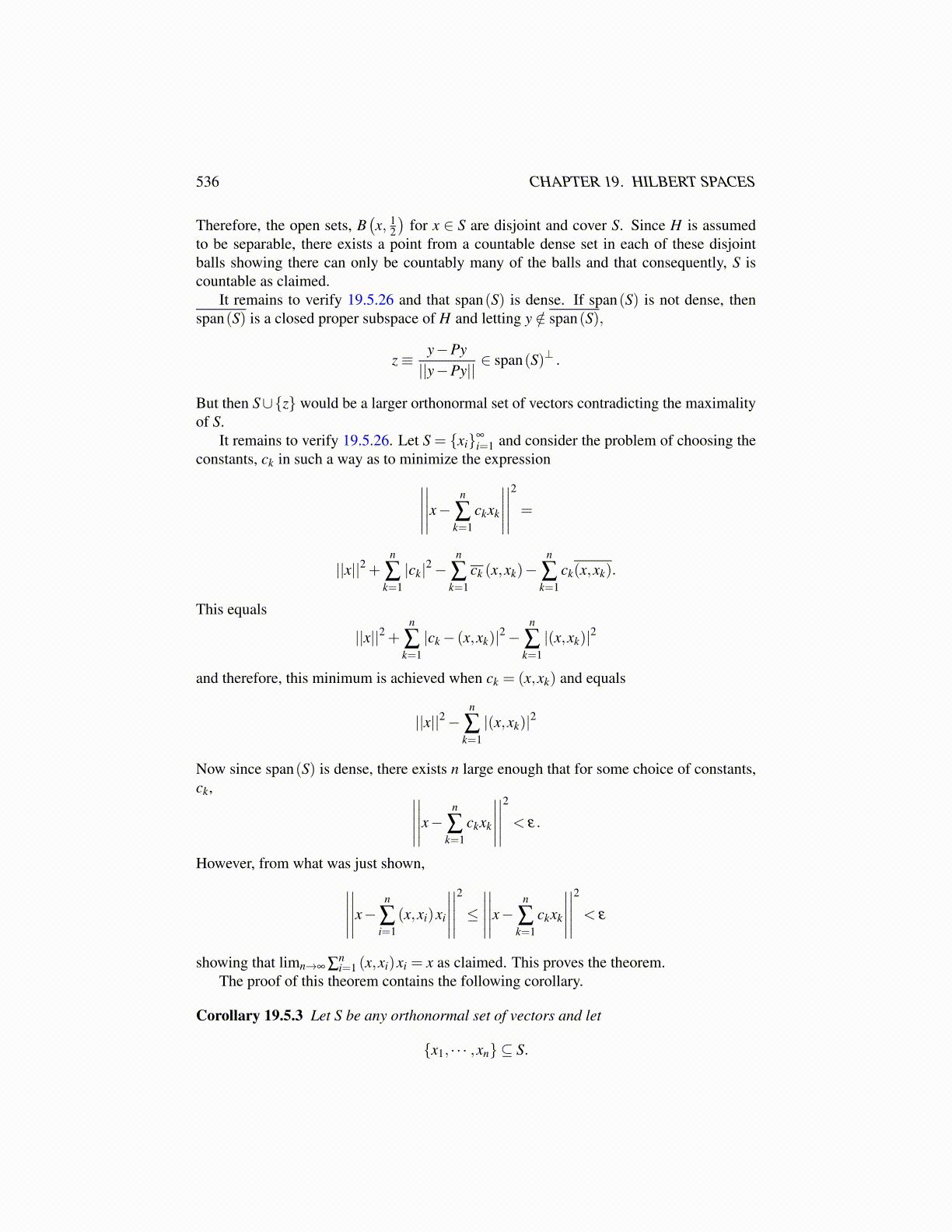
536 CHAPTER 19. HILBERT SPACES
Therefore, the open sets, B(x, 1
2
)for x ∈ S are disjoint and cover S. Since H is assumed
to be separable, there exists a point from a countable dense set in each of these disjointballs showing there can only be countably many of the balls and that consequently, S iscountable as claimed.
It remains to verify 19.5.26 and that span(S) is dense. If span(S) is not dense, thenspan(S) is a closed proper subspace of H and letting y /∈ span(S),
z≡ y−Py||y−Py||
∈ span(S)⊥ .
But then S∪{z} would be a larger orthonormal set of vectors contradicting the maximalityof S.
It remains to verify 19.5.26. Let S = {xi}∞
i=1 and consider the problem of choosing theconstants, ck in such a way as to minimize the expression∣∣∣∣∣
∣∣∣∣∣x− n
∑k=1
ckxk
∣∣∣∣∣∣∣∣∣∣2
=
||x||2 +n
∑k=1|ck|2−
n
∑k=1
ck (x,xk)−n
∑k=1
ck(x,xk).
This equals
||x||2 +n
∑k=1|ck− (x,xk)|2−
n
∑k=1|(x,xk)|2
and therefore, this minimum is achieved when ck = (x,xk) and equals
||x||2−n
∑k=1|(x,xk)|2
Now since span(S) is dense, there exists n large enough that for some choice of constants,ck, ∣∣∣∣∣
∣∣∣∣∣x− n
∑k=1
ckxk
∣∣∣∣∣∣∣∣∣∣2
< ε.
However, from what was just shown,∣∣∣∣∣∣∣∣∣∣x− n
∑i=1
(x,xi)xi
∣∣∣∣∣∣∣∣∣∣2
≤
∣∣∣∣∣∣∣∣∣∣x− n
∑k=1
ckxk
∣∣∣∣∣∣∣∣∣∣2
< ε
showing that limn→∞ ∑ni=1 (x,xi)xi = x as claimed. This proves the theorem.
The proof of this theorem contains the following corollary.
Corollary 19.5.3 Let S be any orthonormal set of vectors and let
{x1, · · · ,xn} ⊆ S.